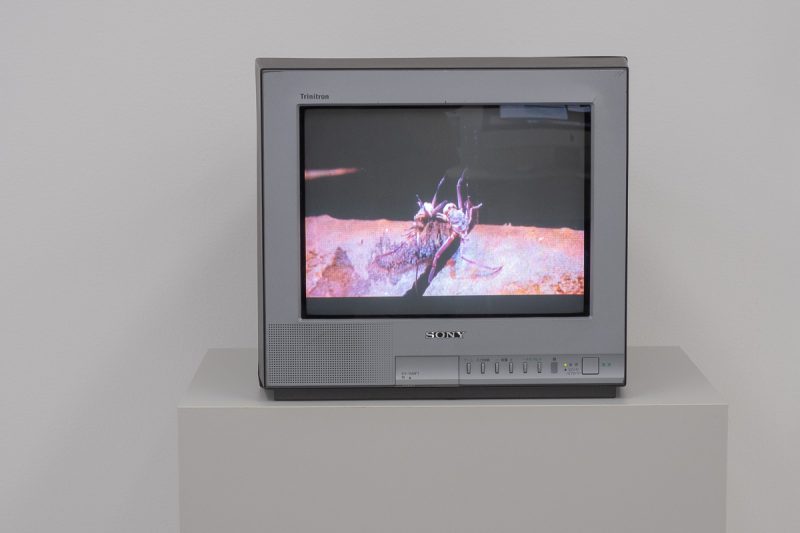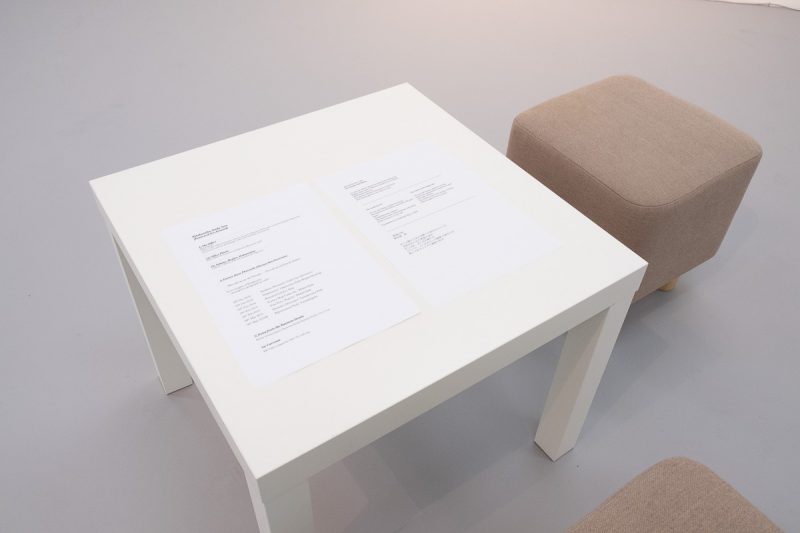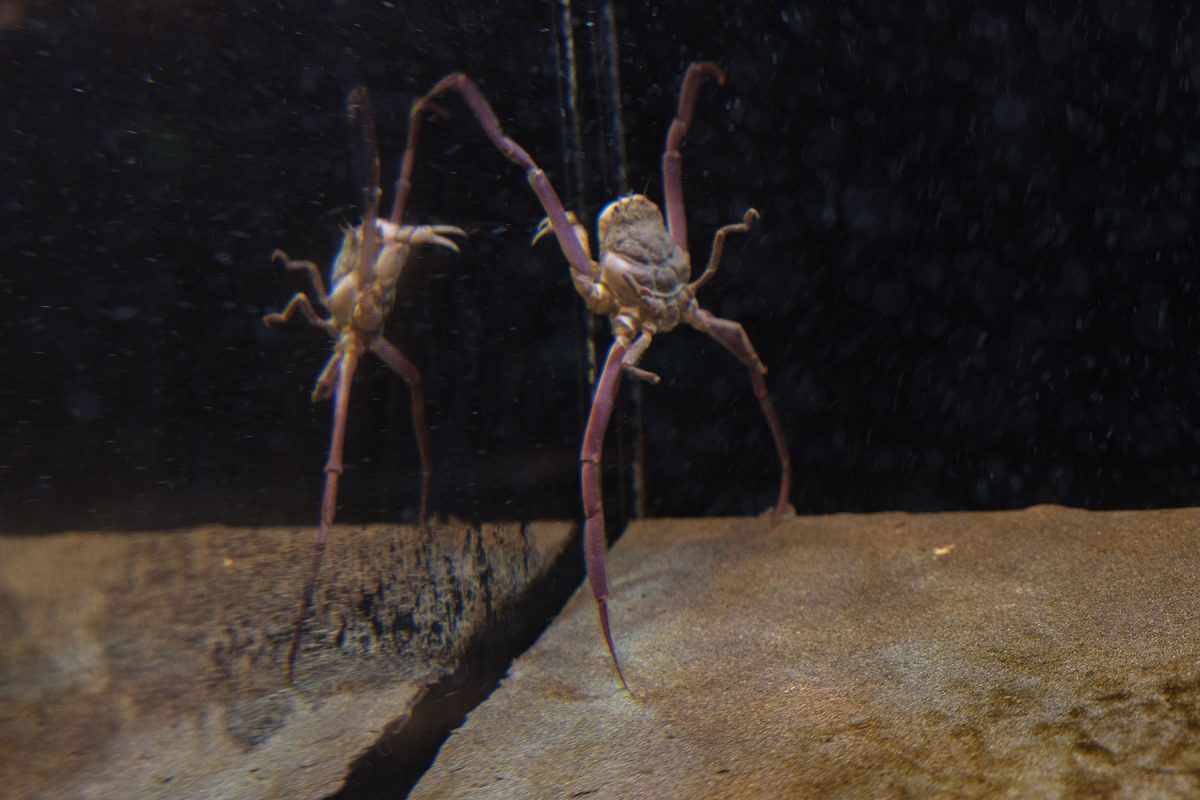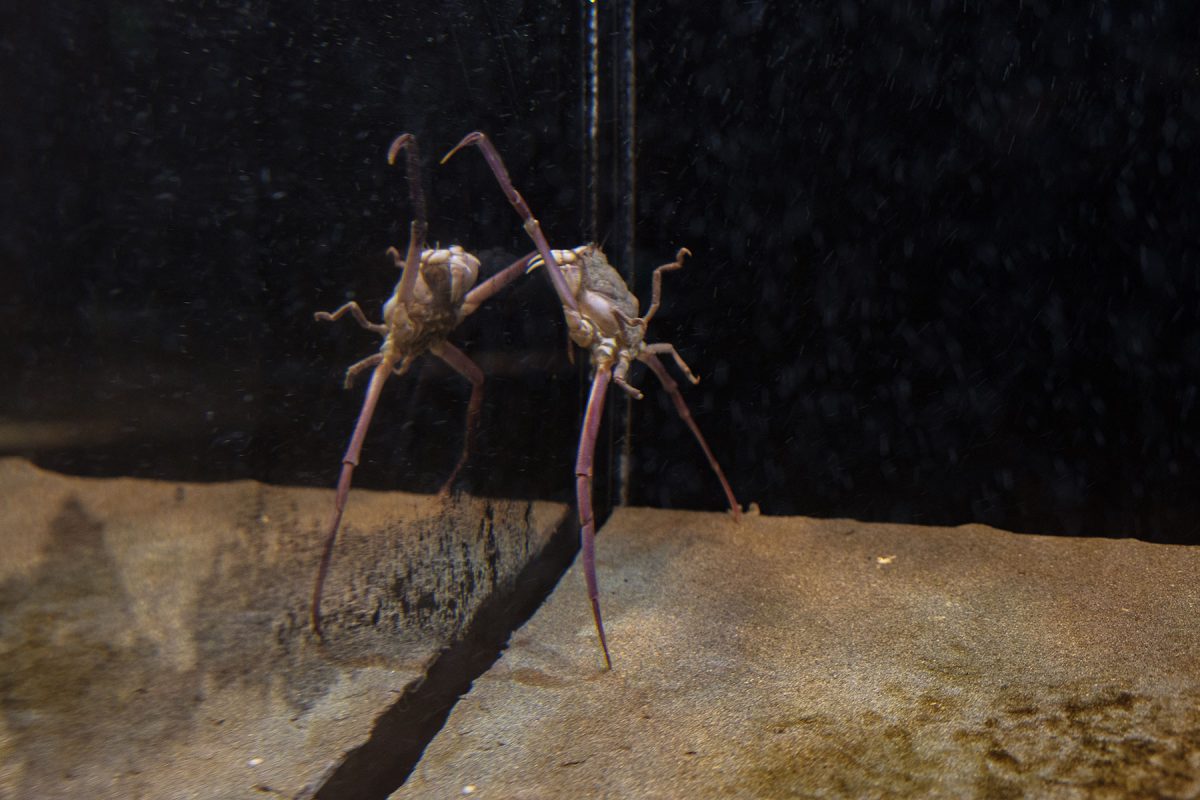Heikegani
HD Video, 4:38 min, 2019
Synopsis
A lonely crab moves to the incessant beat of abstracted classical dance music (Ravel‘s Bolero). The crab becomes a performer, fighting with, courting its own mirror image. It laments its eternal anger.
The Heikegani (Heikeopsis japonica) is a species of crab native to Japan, with a shell that bears a pattern resembling a human face which some believed to be the face of an angry samurai. It is a local legend that these crabs are reincarnations of the Heike warriors defeated at the Battle of Dan-no-ura (close to Kitakyushu) as told in The Tale of the Heike.
Contemplating the distorted pattern on the back of the crab along with his actions, the viewer is left to wonder about what might be anger, what might be evil, all that is „böse“ …, and how it might evolve.
In an installation context the video is presented in conjunction with a poem by Bertold Brecht: Die Maske des Bösen
Production Stills
Installation Details:


The Poem
Bertold Brecht, 1942
Die Maske des Bösen
An meiner Wand hängt ein japanisches Holzwerk
Maske eines bösen Dämons, bemalt mit Goldlack.
Mitfühlend sehe ich Die geschwollenen Stirnadern, andeutend
Wie anstrengend es ist, böse zu sein.
The mask of evil
On my wall hangs a Japanese carving
The mask of an evil demon, decorated with gold laquer.
Sympathetically I observe
The swollen veins of the forehead, indicating
What a strain it is to be evil.
(Translation by Hoffman Hays, 1947)
The mask of the angry one
On my wall hangs a Japanese carving
Mask of an angry demon, lacquered in gold.
Feelingly I observe
The swollen veins at his temples, hinting
What an effort it is to be angry
___________________________________________________________________________


